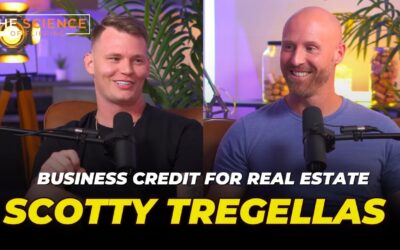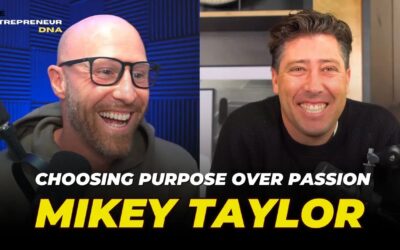How To Calculate Cash Flow On A Rental Property
On this video, we’re going to be talking about cash flow properties, when to buy rentals when not to wholesale them, and why the economics work and what you should be looking for. Stay tuned.

https://www.facebook.com/groups/thescienceofflippingacademy


What’s up everybody? My name is Justin Colby, and welcome back to my channel. If you don’t know, I’ve been real estate investing now for 14 years. I’m wholesaling, flipping and buying rentals. And so this video came up, as one of my students asked me, when do I make the decision about buying a rental versus wholesaling or maybe flipping Now if this is your first time to my channel, I want you to do a couple things for me. Make sure a liking this video, be subscribing to my channel because I drop three videos a week. And lastly, turn on your notifications that will give you notifications on when I’m actually dropping these videos. Again, I dropped three a week and I talk all things business, entrepreneurship and real estate here on my channel, so don’t miss it. Alright, so what are my rules when it comes to buying rentals versus actually wholesaling. Now, I am actively buying anywhere from two to four rentals a month as a moment in time. And I’m currently wholesaling closer to about 20 deals a month in five different states. So why am I making a decision to buy and hold something versus just simply wholesaling? Well, the first fundamental rule that I have that makes it real simple for me, is after all costs, I want to make sure that I’m bringing home at least at minimum $200 a month. That’s my first baseline rule. Now that doesn’t take a whole lot of math, it doesn’t make it very difficult to figure out, I just tried to figure out based around my buy price and all in money, it’s subtracting all of my costs, which would be Hoa vacancy, property management, taxes, and insurance. After all those costs are out the door, I want to make sure I’m putting $200 into my pocket. So again, it doesn’t take a mathematical wizard to figure out whether this property would be a good buying hold. Now there are some more things that I’m going to review with you on when I make that decision. First is going to be my cash on cash returned. Now that’s different than the overall return, which we will talk about here shortly. My cash on cash return is quite literally how much cash Do I have into the property between acquiring the property and rehabbing the property? And then how much am I bringing back into my pocket each and every month? So let’s use the example that I’m all into a property for $100,000. First of all stop there. Yes, there are still properties you can buy all in for $100,000. In fact, I’m doing it every single month in Oklahoma. And there’s plenty of other markets that you can still actually achieved buying a property and rehabbing it for $100,000 or less and No, they’re not in Super ghetto areas. Okay, now, let’s resumed. Now here’s the deal. So I’m all into this property between purchasing it and rehabbing it for $100,000. If it hits my number of me making $200 a month, then I’m gonna make 20 $400 that year. Now, that is a cash on cash return of 2.4%. Now before you get all excited and crazy, because you realize like, well, that’s not a very good return on investment. I totally get that, especially when you consider how well the stock market has been doing. And over the longevity of the stock market, it continues to perform at roughly six, seven, let’s call it between seven and 10% return. Now why would you buy a rental property and deal with all the headaches of being a landlord when the stock market alone can get you overtime? anywhere from seven to 10%? Well, here’s the reality is because what expert investors do, what I do is I leveraged my cash out, meaning I will leverage out roughly $75,000 of that with a loan, meaning the bank will actually give me back $75,000 of my all in capital of 100,000. So now the only capital I have remaining in this deal is $25,000. Now let’s do the simple math, which is simply 20 $400 a year divided by 25,000. And you’re just under a 10% return on your investment now I love that deal. Now that takes leverage. So a lot of people will say well, Justin, you know, I would love to buy rentals, but I don’t have money that will be on a separate video of where to find money and how to make sure that you can raise money because you absolutely don’t need any of your own money to start building a rental portfolio. So there are a couple of things basics that I’ve just given you. First, I want to make sure I can put $200 in my pocket every single month. And then next, I want to make sure my cash on cash return is roughly 10% or higher. Now, like I mentioned, if it’s 9%, or 11, or 12%, I’m okay, I just want to be in that 10% or higher, if I can hit that number cash on cash return. For me, that is a great buying hold, I’m going to move forward, and I’m going to buy that and keep it in my rental portfolio. Alright guys, so really quickly, it’s really important for you understanding that there are expenses when having a rental property. So here’s how I calculate my expenses. And what I subtract, I take the gross rents, and then I subtract expenses such as an HOA, such as property management, such as vacancy, I also do property tax, I also do insurance, and I estimate a small little budget for repairs. If I take all six of those things, I will then reduce it from the gross revenue or the gross income for the month. And now I actually have my cash on cash return, what again, I’ve highlighted for you is if you leverage out with a bank, your cash on cash returns going to be even better. Because once you start subtracting some of those expenses, if you’re all into a property for 100 grand, and then you remove the expenses, your return actually becomes less and less. So again, leverage is going to be key, there are plenty of ways to find the money that’ll be on a separate video. Alright, so that is the basics. Now here’s one thing that I think a lot of people get confused with is the cash on cash return versus the overall return. Now the overall return takes into a couple other things. And it gets a little tricky. Some people call it the IRR. But the overall return, you also want to figure out what type of appreciation that house is going to get each and every year. And historically, you configure on anywhere from three to 5%. Historically, now I know times are crazy right now. So things are a little different right now, that’s why I don’t get too caught up. In my overall return, I really focus on my cache to cache so you have appreciation, which will help your overall return and you have your principal pay down, which also helps your overall return. Now what I mean by that is, if you do go get a mortgage, just like I’ve told you and suggested to, then you’re actually gonna have your monthly rents not only cover the expenses, it’s gonna cover the mortgage as well, that mortgage is paying down your principal loan, that principal loan buy down is giving you more capital. So your overall investment on paper is actually going to be much better than what I just told you your cash on caches. Now, the reason why it gets a little tricky is there are some mathematical equations depending upon where you’re at in the loan and how much principal is being bought down how much appreciation is happening. So I don’t look at that, like if I can get, you know, roughly with rough math, roughly 15% overall return on my investment on as a overall return, then I’m happy again, I want to make sure at least my cash on cash return is at that 10% mark. And if that’s the case, I move forward, the overall I’m not as concerned with so if you’re liking this, make sure you hit the like button and you’re subscribing I dropped three videos a week. Lastly, guys, if you have any desire for me to help you actually achieve any of this and wholesale your way to wealth, which is exactly what I do. Like I said I’m roughly doing 20 wholesale deals a month, and I am buying two to four rentals, I can show you how to do it, just go to the science of flipping.com and fill out a simple form. I’m happy to help you guys. Ultimately guys, I hope these YouTube videos really are helpful. If you have any questions at all. I want you to engage right here on these YouTube videos. ask the questions below in the comments. Make sure to go the science of flipping and I will shoot another video talking a little bit more about where to find money for these rentals and how to actually present the money because I will tell you out of the gate You do not need your own money to start building a portfolio. Take it from me. I’ll see you guys on the next video. Peace



